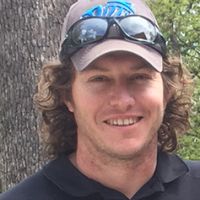Mount et al., 2017
Integrating geomorphological and time-lapse geophysical techniques to characterize hydrogeologic properties within shale and sandstone catchments at the Susquehanna Shale Hills Critical Zone Observatory, Pennsylvania, USA
Mount, G.J., DiBiase, R., Comas, X., Del Vecchio, J., Guo, L., Hayes, J., Forsythe, B., Brantley, S. (2017)
AGU-SEG Hydrogeophysics Workshop, San Francisco, Calif., 24-27 July 2017
-
Shale Hills, INVESTIGATOR, COLLABORATOR
-
Shale Hills, INVESTIGATOR
-
Luquillo, Shale Hills, INVESTIGATOR, COLLABORATOR
-
Shale Hills, GRAD STUDENT
-
Shale Hills, INVESTIGATOR
-
Shale Hills, Sierra, INVESTIGATOR, COLLABORATOR
-
Shale Hills, STAFF
-
National, Eel, Luquillo, Shale Hills, INVESTIGATOR, COLLABORATOR
Abstract
Heterogeneities in the structure and composition of the surface and near subsurface create difficulties in the modelling of seasonally varying hydrologic processes occurring throughout the critical zone. At the catchment scale, characterization of the architecture and material properties of the critical zone through direct measures over varying timescales presents significant challenges, often relying on sparse observations to understand geomorphologically complex areas. Here we use a diverse suite of geophysical tools to characterize the critical zone architecture and gain understanding of the link between geomorphological and hydrological processes at two first order catchments with distinct lithologies; Garner Run underlain by sandstone and Shale Hills underlain with shale, within the Susquehanna Shale Hills Critical Zone Observatory. High resolution airborne LiDAR topography coupled with physical mapping of surficial geomorphology was used to identify patterns of relict periglacial deposits, landforms and surficial conditions at large spatial scales. In addition, near-surface electromagnetic techniques were used both as: 1) discrete surveys to image and characterize the subsurface composition and structure at sub-meter resolution; and 2) time-lapse surveys to investigate changes in the hydrologic regime within the catchment, through areas of enhanced recharge and shallow transmission. Our results show an agreement between inferred surficial and subsurface processes, and highlight structural and aspect-dependent controls on weathering zone thickness and associated hydrologic processes. The multidisciplinary approach presented here therefore shows potential for quickly and efficiently developing critical zone structure models that reveal the linkage between potential surface and subsurface hydrogeologic and geomorphologic controls on landscape evolution.
Citation
Mount, G.J., DiBiase, R., Comas, X., Del Vecchio, J., Guo, L., Hayes, J., Forsythe, B., Brantley, S. (2017): Integrating geomorphological and time-lapse geophysical techniques to characterize hydrogeologic properties within shale and sandstone catchments at the Susquehanna Shale Hills Critical Zone Observatory, Pennsylvania, USA. AGU-SEG Hydrogeophysics Workshop, San Francisco, Calif., 24-27 July 2017.
 This Paper/Book acknowledges NSF CZO grant support.
This Paper/Book acknowledges NSF CZO grant support.
Explore Further








